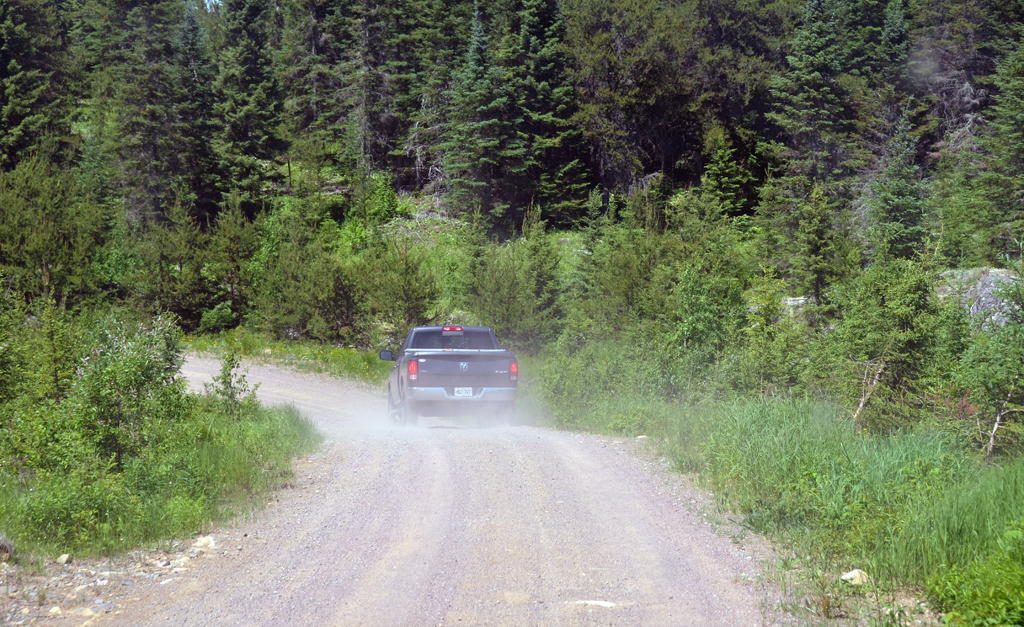
Planning for travel? Here are some tips for summer driving safety
Enjoying the warmer weather and summer sightseeing is something on the to-do list of many Ontarians. Whether you’re planning to travel on highways or rural roads, it’s important to prepare for all road conditions and to keep safety in mind when you’re behind the wheel.
If you plan to travel on one of the many logging or rural roads across the province, there are additional hazards to be aware of. Forest roads are known for rough, uneven terrain, soft shoulders and potential washouts, sharp turns, wildlife, and transport trucks hauling logs and other materials or equipment. These remote areas are far from emergency services, and they do not always have cell phone reception.
Here are some driving tips to keep you safe on your summer adventures:
- Watch your speed: Speed limits are important on all roads, including forest roads. These roads have lower speed limits. They are not always maintained and are surfaced with gravel instead of asphalt – making it harder to stop and maintain control if you need to brake quickly. Poor weather conditions can contribute to slippery driving surfaces, so it is important to slow down and drive carefully.
- Avoid distractions: It’s great to take on the sights in the bush while travelling on a forest or rural road, however, your focus should always be on the road. If you see something that deserves a closer look, safely pull over to the shoulder, but only in areas with strong visibility of your vehicle to others who are passing by. Avoid parking on bridges, curves, and narrow stretches. Drivers must avoid using radios or cell phones while driving, and they shouldn’t be eating or smoking while operating a vehicle.
- Be present while driving: Quick, sharp reflexes are required when driving on any type of road, but the nature of the terrain on a forest or rural road requires special attention. Drivers cannot operate vehicles while under the influence of alcohol, drugs, and certain prescription medications at any time. Vehicle operators should also remain aware of fatigue and alternate drivers when possible. If not, finding a safe place to pull over for a quick rest is a best practice for safe travel.
- Forest roads and workplace safety: While summer trips are great opportunities to be in the open air, travel throughout this season can also be work-related. Employers, supervisors, and workers have roles to play in workplace health and safety and being aware of work-related hazards.
- Take part in the internal responsibility system (IRS): A workplace has a strong IRS when each person fulfills a shared responsibility toward keeping the operation safe and healthy. Following company safety practices and communicating safety concerns are ways each person in the workplace can contribute to a strong IRS. This includes communication about hazards encountered on forest and rural roads.
- Keep best practices at the forefront: Leverage what you learn in workplace training, your company’s policies and protocols. The information from these sources is provided to keep workers safe.These resources should be reviewed often for potential updates that would enhance their effectiveness. Regular review can take place through refresher training and audits of materials and tools used in your company’s safe driving program.
Workplace Safety North (WSN) is here to support you on your journey toward safe travel on logging and rural roads. The self-paced Safe Driving on Forest Roads e-learning course is one tool designed to provide all drivers with the knowledge needed to stay safe, whether operating an ATV or a motor vehicle on this terrain.
For more information, contact a WSN Health and Safety Specialist in your region.
Related
Behind the wheel: Logging industry experts analyze driving hazards – WSN
Northern Ontario forest agency adopts BC-legislated road sign program – WSN
